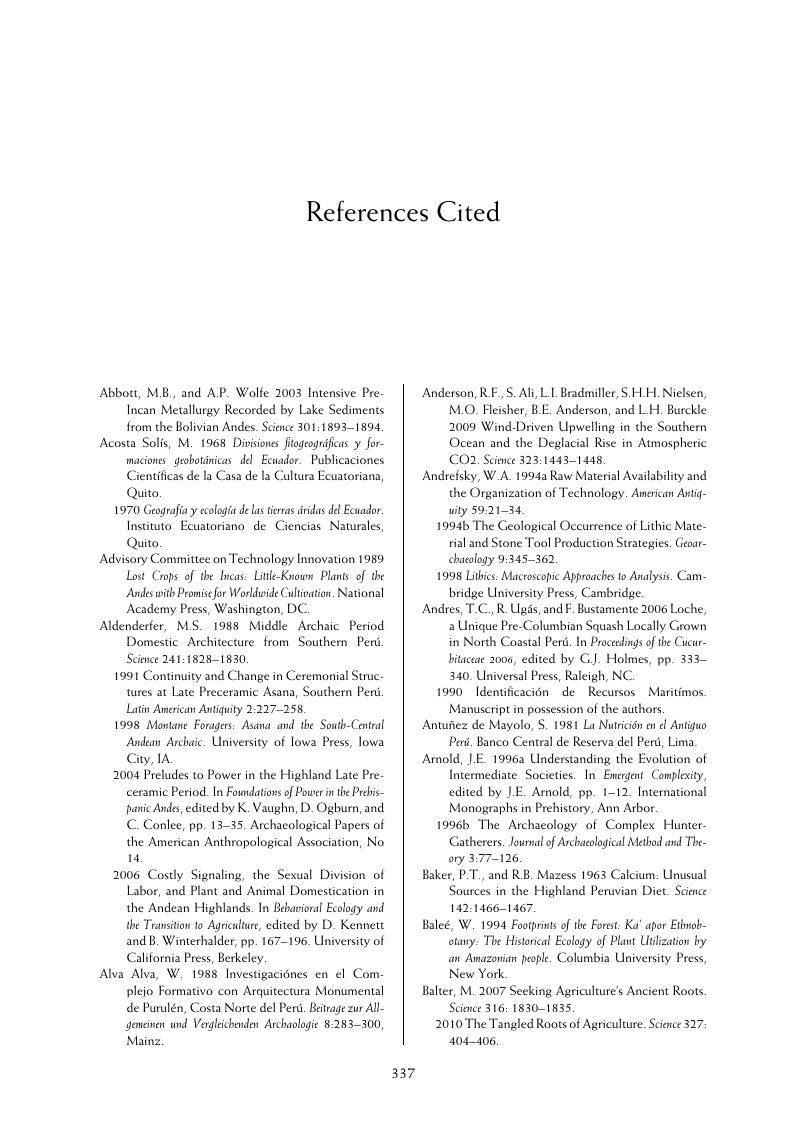Book contents
- Frontmatter
- Contents
- Foreword
- Acknowledgments
- 1 Introduction
- 2 Research History, Methods, and Site Types
- 3 Pleistocene and Holocene Environments from the Zaña to the Chicama Valleys 25,000 to 6,000 Years Ago
- 4 El Palto Phase (13800–9800 BP)
- 5 Las Pircas Phase (9800–7800 BP)
- 6 Tierra Blanca Phase (7800–5000 BP)
- 7 Preceramic Mounds and Hillside Villages
- 8 Human Remains
- 9 Preceramic Plant Gathering, Gardening, and Farming
- 10 Faunal Remains
- 11 Technologies and Material Culture
- 12 Settlement and Landscape Patterns
- 13 Foraging to Farming and Community Development
- 14 Northern Peruvian Early and Middle Preceramic Agriculture in Central and South American Contexts
- 15 Conclusions
- Appendix 1 Radiocarbon Dates for All Preceramic Phases and Subphases
- Appendix 2 Dry Forest Biomes of the Coastal Valleys and Lower Western Slopes in Northwestern Peru
- Appendix 3 Stable Carbon Isotopes
- Appendix 4 Faunal Species Present in Preceramic Assemblages by Phase in the Jequetepeque and Zaña Valleys
- References
- Index
- Plate section
- References
References
Published online by Cambridge University Press: 03 May 2011
- Frontmatter
- Contents
- Foreword
- Acknowledgments
- 1 Introduction
- 2 Research History, Methods, and Site Types
- 3 Pleistocene and Holocene Environments from the Zaña to the Chicama Valleys 25,000 to 6,000 Years Ago
- 4 El Palto Phase (13800–9800 BP)
- 5 Las Pircas Phase (9800–7800 BP)
- 6 Tierra Blanca Phase (7800–5000 BP)
- 7 Preceramic Mounds and Hillside Villages
- 8 Human Remains
- 9 Preceramic Plant Gathering, Gardening, and Farming
- 10 Faunal Remains
- 11 Technologies and Material Culture
- 12 Settlement and Landscape Patterns
- 13 Foraging to Farming and Community Development
- 14 Northern Peruvian Early and Middle Preceramic Agriculture in Central and South American Contexts
- 15 Conclusions
- Appendix 1 Radiocarbon Dates for All Preceramic Phases and Subphases
- Appendix 2 Dry Forest Biomes of the Coastal Valleys and Lower Western Slopes in Northwestern Peru
- Appendix 3 Stable Carbon Isotopes
- Appendix 4 Faunal Species Present in Preceramic Assemblages by Phase in the Jequetepeque and Zaña Valleys
- References
- Index
- Plate section
- References
Summary

- Type
- Chapter
- Information
- From Foraging to Farming in the AndesNew Perspectives on Food Production and Social Organization, pp. 337 - 356Publisher: Cambridge University PressPrint publication year: 2011



